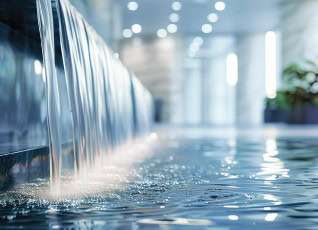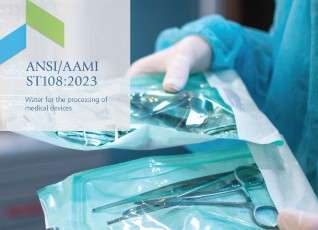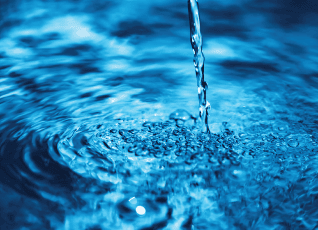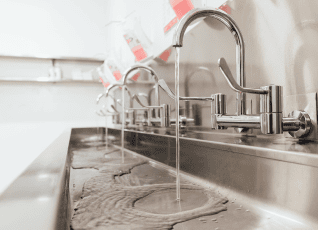The Future of Plumbing: Smart Technologies for Better Water Management

The plumbing industry is undergoing a technological transformation. Aging infrastructure, evolving regulations, and increasing health risks necessitate a shift toward smarter, data-driven water management solutions. These innovations can improve water quality, optimize system performance, and enhance occupant safety. This blog explores how smart plumbing technologies are shaping the future of building water systems, offering practical […]
Report: Gaps in Water Management Programs and Increased Risks

A well-structured and implemented water management program (WMP) is crucial in controlling Legionella and other waterborne pathogens. Recent research has identified common gaps in water system management that may increase the risk of Legionnaires’ disease outbreaks. By understanding these areas and applying proactive solutions, facility teams can strengthen their WMPs and better protect building occupants. […]
“Spring is here—and so is Legionella risk,” warns expert

As the weather warms up, many healthcare facilities prepare for seasonal changes in staffing, patient volumes, and operations. But one area that often gets overlooked during this transition is your building water system—and spring can bring a perfect storm of conditions that elevate the risk of Legionella and sediment-related issues. “Spring is here—and so is […]
From Source to Tap: Navigating Building Water Quality

Water traveling from municipal sources to a building’s taps undergoes a complex journey influenced by everything from the quality of the source water to the building’s internal distribution network. Even water that meets national safety standards can encounter challenges as it passes through aging pipes, is affected by shifting climates, and interacts with building infrastructure. […]
AAMI ST108: Ensuring Water Quality in Medical Device Processing

The Association for the Advancement of Medical Instrumentation (AAMI) introduced Standard ST108 in 2023 to replace the previous AAMI TIR34:2014/(R)2021 standard. AAMI ST108 includes guidelines on: Categories of water quality: Defines water quality requirements for each stage of sterile processing. Water quality monitoring: Sets criteria for assessing water quality, including turbidity, pH, microbial levels, conductivity, and […]
How Weather, Climate, and Water Sources Impact Waterborne Disease Hospitalizations

A recent study from Columbia University, published in the open-access journal PLOS Water, investigates how weather conditions, climate, and water sources affect hospital admissions for waterborne infectious diseases in the United States. The study examined 12 years of data from 516 hospitals in 25 states. Key findings on biofilm-forming bacteria Biofilm-forming pathogens, such as Legionella, […]
Plumbing 201 for Infection Preventionists: The Impact of Plumbing on Healthcare

Healthcare facilities are tasked with preventing the spread of healthcare-associated infections (HAIs), and the intricacies of plumbing design and material selection play a significant role in this effort. The role of biofilm in promoting bacteria and pathogens in healthcare water systems including drains and the link between drinking water outbreaks like Legionella to biofilm in […]
Biofilm: What Is It and How to Control It

Biofilms, intricate communities of microorganisms including bacteria, fungi, and other microscopic entities, thrive on surfaces through a remarkable process of collaboration and self-protection. Encased within a self-produced, slime-like matrix, these microorganisms firmly anchor themselves to a variety of surfaces, from the moist lining of a water pipe to the hard enamel of our teeth. While […]
The Biocide Chlorine Dioxide Stimulates Biofilm Formation in Bacillus subtilis by Activation of the Histidine Kinase KinC
MOSHE SHEMESH, ROBERTO KOLTER, RICHARD LOSICKAMERICAN SOCIETY FOR MICROBIOLOGY, JOURNAL OF BACTERIOLOGY, DECEMBER 2010 IntroductionThe goal of this study was to examine how biofilm formation is stimulated by chlorine dioxide, a chemical that is typically very effective and fast-acting against bacteria. The study examined how chlorine dioxide works and how the biofilm acts as a protector […]
Cluster of Carbapenemase-Producing Carbapenem-Resistant Pseudomonas aeruginosa Among Patients in an Adult Intensive Care Unit
MEGAN E. CAHILL, MARTHA JAWORSKI, VICTORIA HARCY, ERIN YOUNG, D. CAL HAM, PAIGE GABLE, KRIS K. CARTERCDC, MORBIDITY AND MORTALITY WEEKLY REPORT, AUGUST 2023 IntroductionThe report discusses an examination into the infections of carbapenemase-producing carbapenem-resistant Pseudomonas aeruginosa (CP-CRPA) in an Idaho hospital (Hospital A) between September 2021 and January 2022. The infections present a significant challenge […]